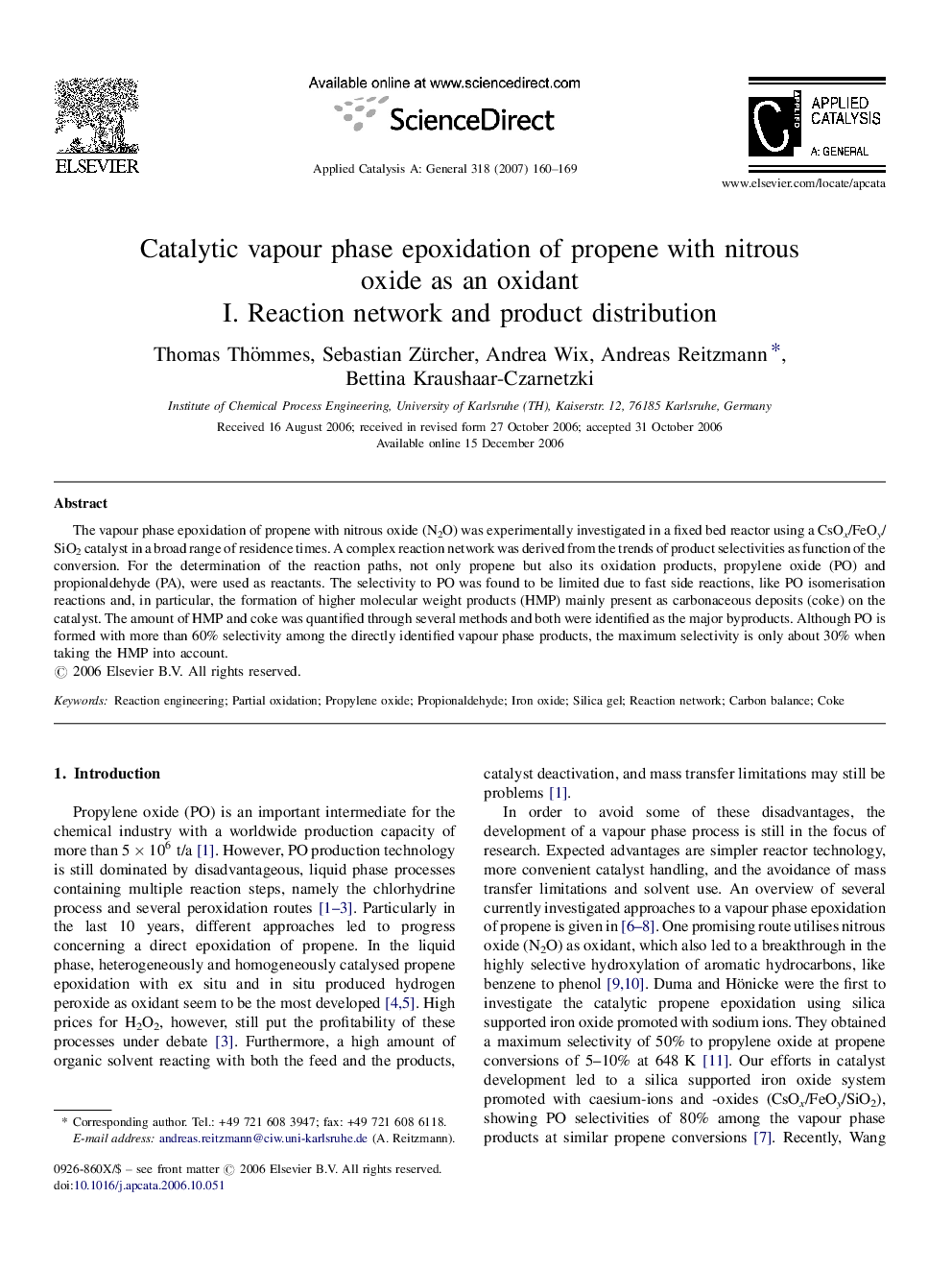| Article ID | Journal | Published Year | Pages | File Type |
|---|---|---|---|---|
| 44079 | Applied Catalysis A: General | 2007 | 10 Pages |
The vapour phase epoxidation of propene with nitrous oxide (N2O) was experimentally investigated in a fixed bed reactor using a CsOx/FeOy/SiO2 catalyst in a broad range of residence times. A complex reaction network was derived from the trends of product selectivities as function of the conversion. For the determination of the reaction paths, not only propene but also its oxidation products, propylene oxide (PO) and propionaldehyde (PA), were used as reactants. The selectivity to PO was found to be limited due to fast side reactions, like PO isomerisation reactions and, in particular, the formation of higher molecular weight products (HMP) mainly present as carbonaceous deposits (coke) on the catalyst. The amount of HMP and coke was quantified through several methods and both were identified as the major byproducts. Although PO is formed with more than 60% selectivity among the directly identified vapour phase products, the maximum selectivity is only about 30% when taking the HMP into account.
Graphical abstractA complex reaction network was derived from experiments using propene, propylene oxide (PO), and propionaldehyde as reactants. Fast side reactions, especially to higher molecular weight products (HMP) limit the selectivity to PO. Although PO is formed with more than 60% selectivity among the directly identified vapour phase products, the maximum selectivity is only about 30% when taking the HMP into account.Figure optionsDownload full-size imageDownload as PowerPoint slide
